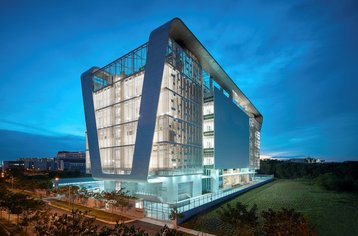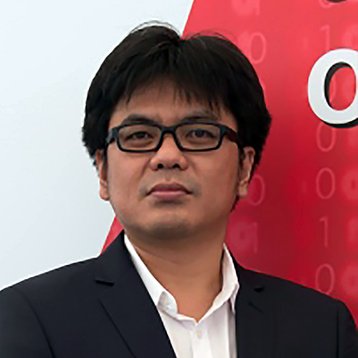We have previously written about Telin-3, a new five-storey data center in the Singapore Data Centre Park (DCP) in Jurong. But lots has been happening there, so it’s time for an update.
Built at a cost of US$155M by Telekomunikasi Indonesia International Pte Ltd (Telin Singapore), Telin-3 is the first data center at the DCP, which is envisioned to hold up to eight data center buildings within an allocated area of around 13 hectares. The idea is to offer ready plots of land to house new purpose-built data centers that can tap into a range of ready-built infrastructure such as a redundant fiber network and dual power feeds.
A closer look at the DCP
Shortly after it launched, DCD had a tour and a briefing by Freddi Huang, the head of network engineering and operations at Telin Singapore. We were naturally curious about what infrastructure support Telin-3 gets from DCP.
According to Huang, Telin-3 gets power from two on-site power substations built specially to serve the DCP. The data center currently has access to two 22KVA feeds, though this can be bumped up to 66KVA if required. When completely built-up, Telin-3 will have 17MW for IT power with 8MW for cooling.
Uptake at the new facility appears to be strong so far: Huang says that 30 percent of power from the first phase has already been reserved.
What is particularly interesting about the DCP is the dark fiber ring laid down by Jurong Town Corporation (JTC) within the DCP. Data centers can tap into this fiber network through fiber paths from the front and back of each data center plot, eliminating the need for further digging that could potentially damage others’ connecitons.
Unlike most data centers, Telin-3 has three fiber paths, and is wired to its own cross-island dark fiber ring network that will link up to Telin Singapore’s Telin-1 data center in Changi, as well as Telin-2, which is located at a carrier hotel. While Huang declined to offer specifics, the capacity of the ring network is currently at 100G. When fully lit it could be measured in terabits.
The network doesn’t just end in Singapore though. Telin-3 will soon be connected directly to the IGG subsea cable, which lands at nine other locations in Indonesia. In the west, it is also hooked up to South-East Asia Japan Cable (SJC) and Southeast Asia-Middle East-Western Europe 5 (SEA-ME-WE 5) at the Tuas landing station. Finally, Telin Singapore’s dark fiber ring will give it access to Asia American Gateway (AAG) in the east, as well as other regional subsea cables.
A walk around Telin-3
Touted as the first multi-tier data center, the team had clearly pulled out all the stops to make the brand-new data center stand out technically. For one, the data center hall incorporates a modular design with both halves of the hall designed to operate independently. Huang explained that each data center hall also has its own fiber ring to offer high levels of reliability.
While part of the decision to deploy DRUPS (diesel rotary uninterruptible power supply devices) for handling the IT load in an outage was due to its environmental friendliness, Huang was candid that a desire to maximize the gross floor area usage of Telin-3 also factored into the equation.
Compared to lead-acid batteries which have a lower temperate range for optimal operation, it is not necessary to install separate cooling hardware for the DRUPS. This effectively reduces the footprint for backup power, and increases the effective utilization of the data center.
Other efforts were made to keep green though. Aside from the use of recycled NEWater for cooling, rainwater is also being recycled, though Huang admitted that the latter makes up such a small fraction of the total water usage that this fact didn’t make it into any of its marketing materials. As you would expect, all the lighting within the data center are LED for energy efficiency.
Though we didn’t see it, Huang says his team took time to develop its own DCIM platform, called Telin Integrated Portal (TIP). Built on Schneider’s DCIM platform, it has been heavily customized and extended with the assistance of local developers to integrate with all components, and extends all the way to the lighting. We spotted Schneider wireless sensors used to keep track of temperature of individual racks.
In September, Telin-3 became the first VMware validated data center in the Asia Pacific. This isn’t an empty accreditation merely to show off its software-defined data center chops. Other than in the security control room, we observed no standalone PCs in use within the facility. The terminals that we saw at the reception area, for instance, were powered from thin clients for heightened security against tampering and data theft.


